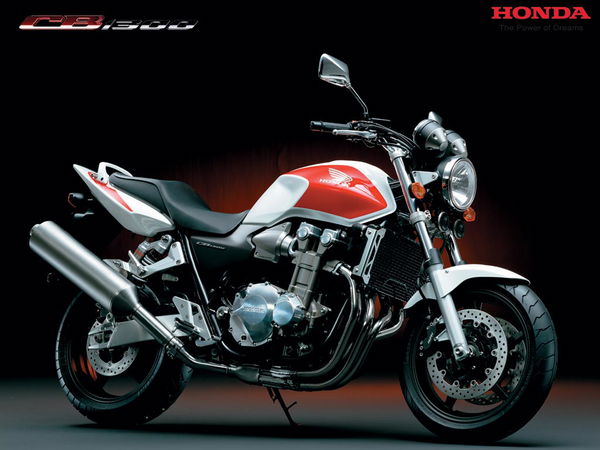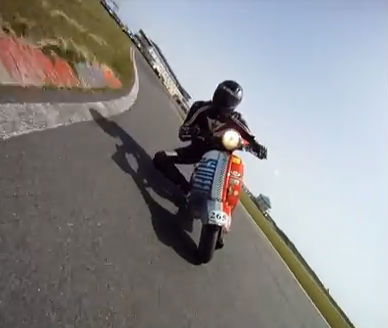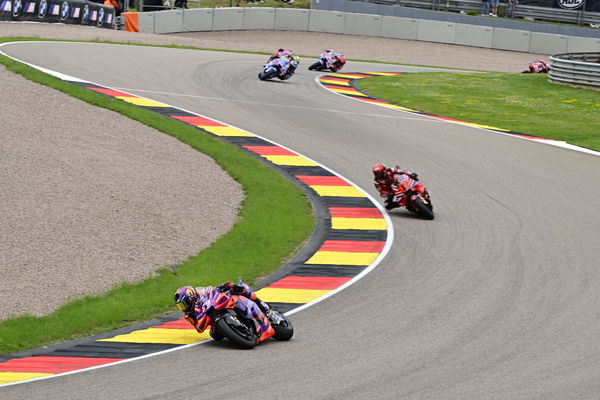Discuss: We need a muscle bike revival
Do we need retro muscle bikes like Honda's CB1300 in the UK again? Visordown’s industry expert, who in his own interest cannot be named, argues it's time the Japanese brought them back


IT isn’t often that a whole category of motorcycle simply dries up and blows away, but that’s pretty much the fate of the muscle bike in the UK market.
A decade ago it was thriving. No list of bike categories would have been complete without including muscle bikes, and for good reason; they were outselling things like adventure bikes back in the early-2000s. But these days you can barely find a new one on sale, making it near-impossible to judge how well the class might be doing if such machines were available.
Back in the pre-recession era, your choice of muscle bikes – or perhaps we should call them ‘standards’ or even ‘UJMs’ – stretched across all four of the big Japanese brands. Honda sold us the CB1300, Kawasaki offered the brutal-looking ZRX1200, Suzuki had the biggest of all, the GSX1400 and Yamaha stepped up to the plate with the XJR1200. Today only the last of those machines is still available, and it’s barely changed since its 2002 heyday, when Yamaha shifted more than 1100 of them in 12 months.
According to HowManyLeft.co.uk (which uses official Government registration data) some 135 examples of the sole survivor of the muscle bike category, the XJR1300, were registered in 2013. That might sound like its rivals made a good decision in ditching the class, but it actually represents a massive upturn. In 2011, only 78 found new owners, and 2012 was barely better at 82. So the 2013 figure represents, in percentage terms, a significant rise. Perhaps even the start of a rebound?
It’s too early to tell, and also hard to judge because the ageing Yamaha has no rivals and there’s been nothing new in years to stimulate the market. The closest thing to a new bike in the field is the more retro-flavoured Honda CB1100F, which reached the UK for the first time in 2013. Perhaps surprisingly, given the press coverage it gained as a new model, sales were on a par with the XJR1300, with 142 new registrations in 2013 according to HowManyLeft. Despite its attractive styling and authentic retro appeal, it lacks the testosterone of a proper muscle bike and perhaps an element of the usability; can you imagine a CB1100F covered in the sort of high-mileage winter road muck that you’ll often see gracing one of the old-school muscle bikes?
The numbers might not sound impressive for either bike, but it puts both well ahead of several other more high-profile machines, like the Honda Goldwing, Aprilia Tuono V4 and RSV4R, Ducati Hypermotard and hosts of niche-market cruisers and customs.
And it’s not like selling muscle bikes would mean massive R&D expense. With the exception of the Suzuki GSX1400R which was buried in 2008, the muscle bikes that were so popular here a decade ago are still on sale in Japan. The CB1300 – in both naked Super Four and faired Bol D’Or guises – has been recently updated, while the ZRX1200 is still offered in Japan looking just as much like one of Eddie Lawson’s old superbikes as it ever did.
There’s nothing new about them. And that’s part of the appeal. Even the terminology surrounding the bikes is from a different era. When was the last time you heard reference to piggy-back shocks? Or a double-cradle steel frame? These terms have the sort of echoes of a dimly-recalled time gone by that makes them more appealing than things like fork gaiters and rubber tank knee pads, the elements associated with current retro bikes like the Bonneville and Kawasaki W800. These days even riders in relatively advanced stages of middle-age are unlikely to have direct memories of those things being fashionable first time around, but they will remember the heyday of muscle bikes, in the era just before everything performance-oriented gained a fairing.
Manufacturers at the moment are obsessed with niches, and for good reason – the days when one type of bike made up the lion’s share of sales are gone, and riders who once considered nothing but superbikes are looking in all directions for their next machine. So surely it stands to reason that muscle bikes, things that go back to basics and offer decent performance, style, a dash of comfort and gobs of torque, could once again stand up for themselves? It’s early days, but the upturn in Yamaha XJR sales says I might be right – now it’s down to the rest of the world’s bike firms to decide whether or not to get behind that rebound.
So, over to you. Does the idea of a muscle bike revival leave you cold or is it a class of machine that would bring new life to the market, maybe even tempt you into a showroom? Let us know.











